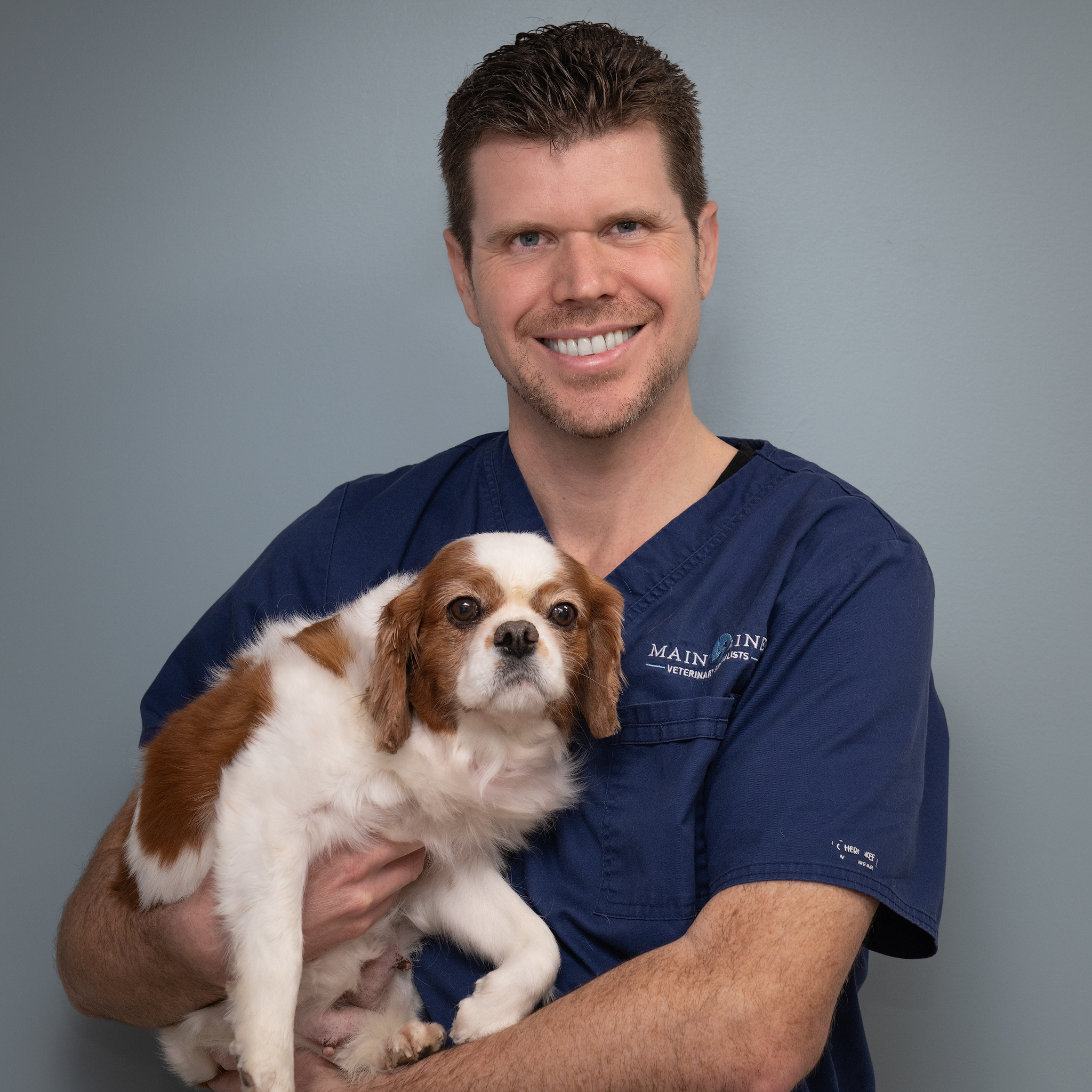FAQs Before Visiting a Board Certified Veterinary Cardiologist}
The Role of Ultrasound and CT Scan in Modern Veterinary Practices: Insights From Experienced Professionals
In modern veterinary practices, ultrasound and CT scans considerably improve diagnostic abilities. These imaging techniques give essential understandings into animal health, directing treatment decisions. Experienced experts acknowledge the special benefits of each technique. Ultrasound provides real-time evaluations, while CT scans deliver elaborate anatomical details. Understanding their applications and duties elevates crucial concerns regarding their impact on client outcomes and the future of vet diagnostics. What understandings can be gotten from their integrated use?
Understanding Ultrasound in Vet Medicine
Ultrasound is a vital analysis device in vet medicine, using a non-invasive approach to envision inner frameworks. This imaging strategy uses high-frequency sound waves to create real-time pictures of cells and organs, enabling veterinarians to analyze problems without surgical intervention. Common applications consist of evaluating the heart, liver, kidneys, and reproductive body organs, in addition to checking pregnancies.The treatment is fairly quick and can be carried out in different settings, making it an available choice for veterinarians. Unlike radiography, ultrasound provides detailed details regarding soft cells and blood circulation, which is essential for precise diagnoses.Veterinary professionals depend on ultrasound to find irregularities such as growths, cysts, and fluid buildup. Its capability to direct biopsies and other treatments additionally enhances its energy in scientific practice. By supplying a secure and efficient method to examine inner composition, ultrasound has come to be a keystone of modern-day veterinary diagnostics.
The Advantages of CT Scans for Pet Diagnostics
CT scans deal substantial benefits in vet diagnostics by supplying boosted accuracy in recognizing internal problems (CT Scans For Animals). As a non-invasive imaging technique, they ensure the safety and convenience of pets during exams. On top of that, CT checks facilitate a detailed assessment of internal frameworks, permitting a lot more reliable treatment planning
Improved Analysis Precision
Advancements in imaging innovation have actually greatly enhanced diagnostic accuracy in veterinary medication, specifically through making use of CT scans. These scans give detailed cross-sectional pictures of a pet's inner frameworks, allowing veterinarians to recognize abnormalities with precision. The high resolution and three-dimensional abilities of CT imaging help with the detection of conditions such as growths, fractures, and internal bleeding that might be missed with traditional imaging methods. Additionally, CT scans can assist in pre-surgical planning by offering a complete sight of physiological relationships. This level of information not just boosts the accuracy of diagnoses however likewise aids in tailoring effective treatment strategies. Subsequently, the assimilation of CT modern technology right into veterinary practices is changing the landscape of pet health care, enhancing outcomes for people.
Non-Invasive Imaging Technique
The intro of non-invasive imaging methods has changed animal diagnostics, with CT scans becoming a famous tool in vet methods. These scans provide high-resolution, cross-sectional photos of an animal's inner structures, permitting veterinarians to assess intricate conditions without the demand for invasive treatments. The benefits of CT scans include their capacity to find growths, cracks, and interior bleeding with amazing accuracy. Furthermore, they facilitate the analysis of soft tissues and body organs, boosting diagnostic capacities. The speed of CT scanning allows fast decision-making, which is important in emergency situation circumstances. By decreasing tension and pain for the pet, CT scans add to a much more gentle approach to diagnostics, eventually boosting treatment outcomes and progressing vet treatment.
Comprehensive Internal Assessment
A thorough interior analysis is important for accurate diagnosis and efficient therapy in veterinary medicine. CT scans offer significant benefits hereof, offering thorough cross-sectional photos of a pet's internal structures. This sophisticated imaging method boosts visualization of intricate physiological regions, allowing vets to determine abnormalities such as lumps, cracks, and inner blood loss with higher precision. In enhancement, CT scans facilitate the evaluation of problems that might be challenging to identify via traditional approaches. The rate and accuracy of CT imaging additionally add to prompt treatments, improving individual end results. As vet methods significantly incorporate CT technology, the benefits of extensive internal analyses become apparent, reinforcing the relevance of this tool in modern veterinary diagnostics.
Contrasting Ultrasound and CT Imaging Techniques
While both ultrasound and CT imaging offer essential functions in veterinary diagnostics, each method provides distinctive advantages and restrictions that can affect medical decision-making. Ultrasound is specifically valued for its real-time imaging abilities, enabling veterinarians to observe dynamic physical processes. This method is non-invasive, mobile, and does not entail ionizing radiation, making it a safer option for both clinicians and animals. Nevertheless, ultrasound might have constraints in picturing particular anatomical frameworks or deep tissues.Conversely, CT imaging supplies in-depth cross-sectional sights of the body, permitting specific localization of problems. It masters evaluating complex body organs and structures, especially in the thorax and abdominal area. CT scans need sedation or anesthesia in many cases and include direct exposure to ionizing radiation. Eventually, the selection between ultrasound and CT relies on the particular professional scenario, the area of passion, and the necessity of the diagnostic needs.
Case Studies: Effective Diagnoses With Imaging
Instance researches show the significant improvements in diagnostic accuracy achieved via advanced imaging innovations like ultrasound and CT scans in vet techniques. These advancements not only enhance the detection of various problems yet additionally promote prompt and reliable treatment plans. Analyzing specific cases can highlight the transformative effect of these imaging methods on veterinary medication.
Analysis Accuracy Improvements

Imaging Innovation Advancements
As vet imaging technology remains to advance, its impact on diagnostic capacities becomes progressively obvious. Current study highlight the effective application of innovative ultrasound and CT scan methods in recognizing intricate conditions. For circumstances, a vet facility made use of high-resolution other CT scans to diagnose a rare form of lung cancer in a canine, which traditional imaging had missed. An ultrasound exam disclosed a stomach mass in a feline, triggering timely surgical treatment and a favorable result. These improvements not just improve diagnostic accuracy but additionally make it possible for vets to create targeted therapy plans. By leveraging innovative imaging innovations, veterinary professionals are significantly enhancing individual care, causing extra reliable administration of various health problems in animals.
The Role of Imaging in Emergency Veterinary Treatment
Imaging plays a crucial function in emergency veterinary care, supplying veterinarians with essential details required to make quick, enlightened decisions. In immediate circumstances, techniques like ultrasound and CT scans make it possible for professionals to quickly analyze a family pet's inner structures, recognizing important conditions such as inner bleeding, cracks, or body organ irregularities. These imaging methods enable real-time analyses, assisting in prompt interventions that can be life-saving. As an example, ultrasound is vital for assessing soft cells injuries and problems like fluid build-up, while CT checks deal comprehensive photos of intricate anatomical structures, crucial for diagnosing trauma instances. The speed and accuracy of these imaging techniques improve the veterinarian's capability to design effective treatment plans, guaranteeing the very best feasible outcomes for their patients. Consequently, the combination of sophisticated imaging innovations right into emergency situation vet practices is not just beneficial but increasingly required, as it improves analysis capacities and boosts total pet care throughout defining moments.
Training and Knowledge in Veterinary Imaging
Innovative imaging techniques such as ultrasound and CT scans are necessary for effective veterinary care, the effective application of these technologies heavily depends on the training and experience of veterinary experts. Proficient use imaging devices requires comprehensive understanding of makeup, pathology, and the concepts underlying each method. Veterinary professionals should go through specific training to precisely analyze imaging outcomes, which is essential for diagnosing conditions and planning treatment.Certifications and continuing education in veterinary imaging boost the abilities of practitioners, allowing them to remain upgraded with technical innovations. Cooperation in between radiologists and veterinarians usually results in boosted analysis precision, as professionals can offer insights into complex cases. In addition, practical experience in handling imaging tools cultivates self-confidence in its application. Eventually, the quality webpage of vet imaging solutions is directly correlated to the degree of training and knowledge had by the specialists using these vital diagnostic tools.
Future Patterns in Diagnostic Imaging for Animals
With the fast developments in technology, vet diagnostic imaging is positioned for considerable evolution in the coming years. Arising patterns indicate a change towards even more portable and obtainable imaging modalities, such as portable ultrasound devices, which can enhance area diagnostics. Additionally, the assimilation of man-made knowledge is expected to change picture evaluation, allowing for quicker and extra precise interpretations of results.Moreover, advancements in 3D imaging techniques and calculated tomography will give veterinarians with even more comprehensive sights of animal composition, leading to enhanced therapy plans. Online fact technology may additionally contribute in surgical preparation and education, giving vets a distinct point of view on intricate cases.As telemedicine remains to grow, remote appointments helped with by diagnostic imaging will come to be extra common, enabling experts to help family doctors in real-time. Overall, these patterns are set to enhance the efficiency and efficiency of veterinary care, eventually boosting pet end results.
Regularly Asked Concerns
Exactly How Much Do Ultrasound and CT Scans Expense in Vet Centers?
The prices of ultrasound and CT scans in vet facilities commonly vary from $300 to $1,500, depending on factors such as location, clinic kind, and specific treatments needed for the pet's diagnosis and treatment.

Are There Any Type Of Dangers Linked With Ultrasound and CT Scans for Animals?
Ultrasound and CT scans normally posture marginal dangers to family pets. Prospective issues include sedation reactions and exposure to anesthetics. Veterinarians very carefully examine each instance to minimize any kind of threats connected with these analysis treatments
For How Long Do Ultrasound and CT Procedures Normally Take?
Ultrasound treatments normally take about 30 minutes to an hour, depending on the intricacy. CT scans, being even more in-depth, normally require half an hour to 90 mins, consisting of preparation and recovery time for the family pet.
Can All Veterinarians Perform Ultrasounds and CT Scans?
Not all vets can perform ultrasounds and CT scans. Specialized training and certification are frequently called for to assure proficiency in these advanced imaging methods, which may restrict their schedule to vets with additional credentials and sources.
What Kinds Of Animals Benefit Many From These Imaging Techniques?
Particular pet types, particularly pets and felines, benefit significantly from ultrasound and CT scans. These imaging strategies improve analysis accuracy for problems like tumors, inner injuries, and organ problems, causing improved therapy outcomes and individual care. The high resolution and three-dimensional abilities of CT imaging facilitate the discovery of problems such as tumors, cracks, and internal bleeding that could be missed with click to read more standard imaging methods. Situation researches show the substantial enhancements in diagnostic precision accomplished via advanced imaging innovations like ultrasound and CT scans in vet techniques. Improving diagnostic accuracy in vet techniques has been considerably helped by innovations in imaging technologies such as ultrasound and CT scans. Sophisticated imaging methods such as ultrasound and CT scans are essential for efficient veterinary treatment, the effective execution of these modern technologies heavily depends on the training and knowledge of veterinary experts. Vet specialists must undergo specialized training to accurately translate imaging results, which is crucial for identifying problems and preparing treatment.Certifications and proceeding education and learning in vet imaging boost the abilities of experts, allowing them to remain upgraded with technical improvements.